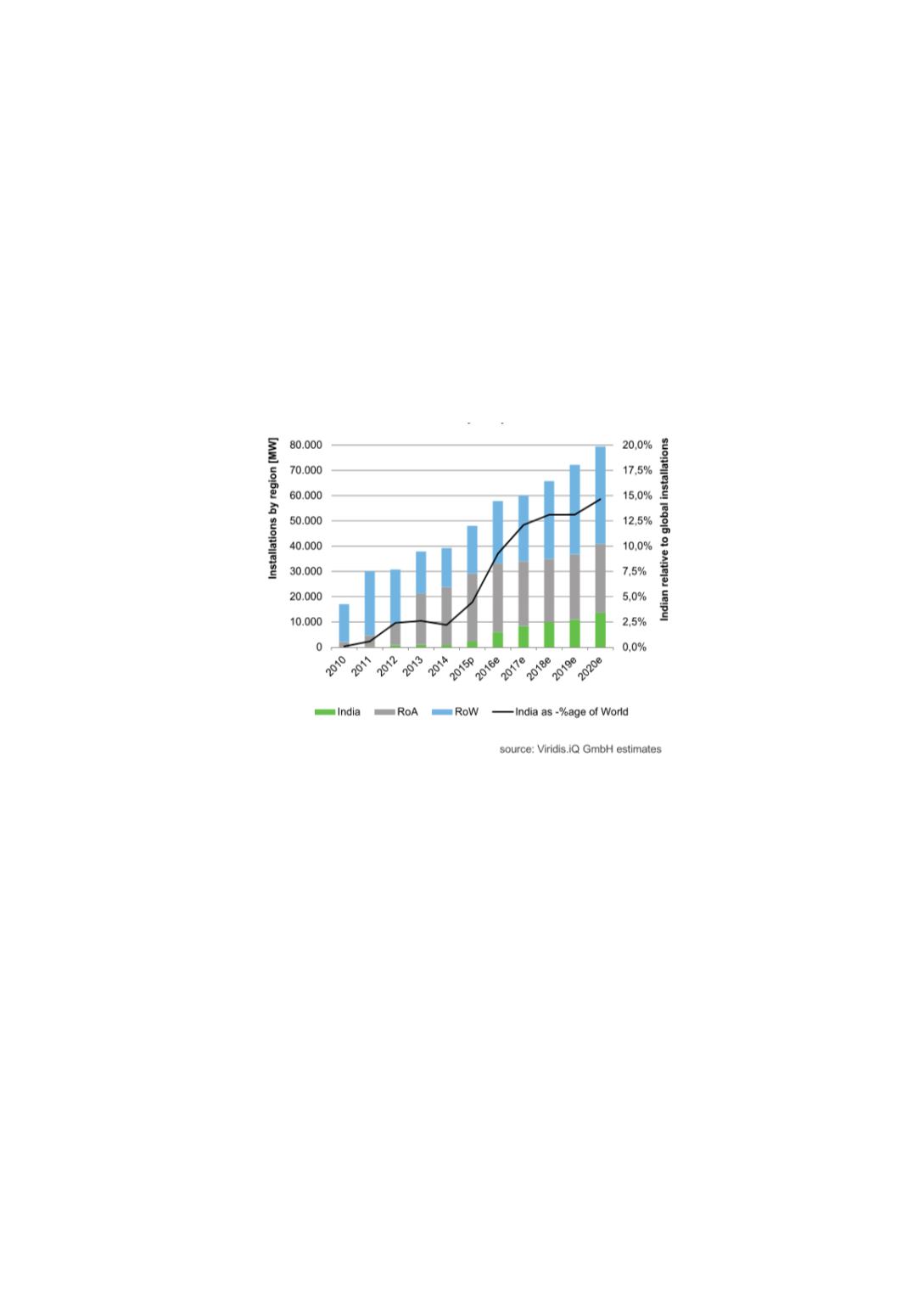

Solar’s new future
It is clear that the world’s photovoltaic sails have been filled with a new wind of
opportunity as the technology moves into the mainstream with a more healthy and
sustainable y-o-y growth. Additionally, the emergence of new markets like India with
aggressive installation and manufacturing aspirations makes the future of solar energy
quite bright indeed.
PV demand forecasts
Figure 1 PV market growth forecasts
The prospect of an 80 GW solar market in 2020 from only 18 GW in 2010 is a
testament to the mainstream spread of Photovoltaics and has led to an enormous supply
chain infrastructure build up as suppliers and equipment providers expanded their
businesses to support the growth. When the solar market was in its infancy the volumes
of materials, and consequently wastes from the processes for those materials, was very
low. As the market has continued to grow the industry has had to deal not only the
increasing material streams that are needed to sustain the growth, but also the wastes.
Aside from the overall demand growth of the solar segment, the changes in the
actual production costs have been equally as dramatic. Polysilicon production costs
have seen huge reductions due in part to economies of scale that have pushed producer
costs to the mid $10’s per kg levels with further reductions in sight.
Unseen wastes
The name “waste” implies a material that has no value, however in most modern
industrial factories, almost all “wastes” have some value, even if that value is negative
44


















